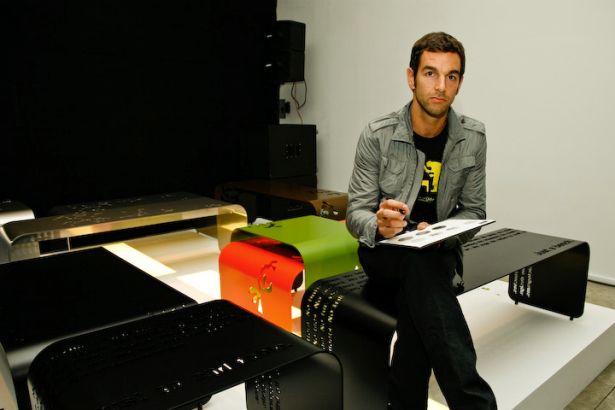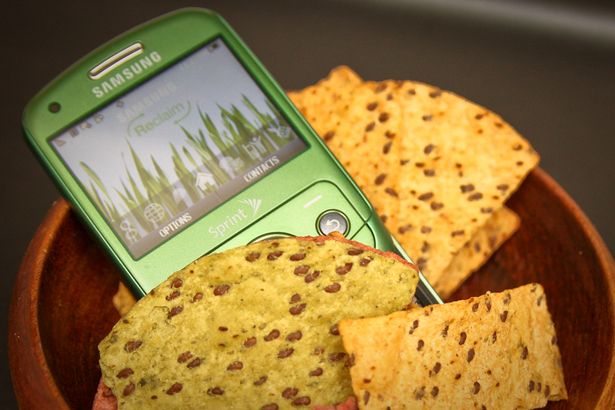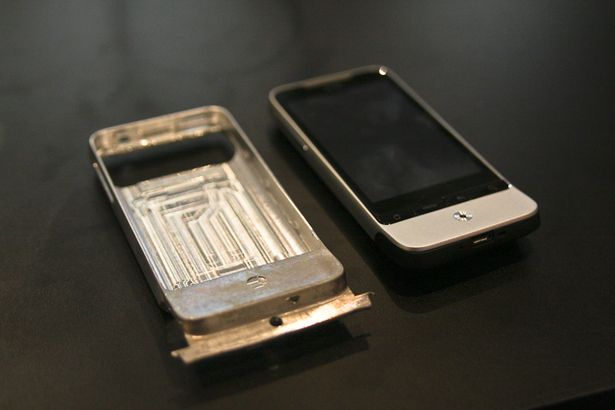Forget processor speeds for a moment, forget how fast a device can go, what you'll be able to do with the software and how most devices in the future will promise to be a gateway to another world. What are our gadgets of the future going to be made of?
Glass, carbon fibre, metal, plastic or maybe a new material we've yet to use are all possibilities that we can think of, but what about the people that actually do this stuff for a living. Who are designing the gadgets of tomorrow; what materials are they playing with at the moment?
"Whenever you design a new product, there are four areas you look at; Size, Eco, Performance, and Magic", Claude Zellweger, creative director of industrial design agency One & Co, tells Pocket-lint.
Zellweger, who heads up the creative department of the firm that is owned by phone maker HTC and has other big name clients like Nike on their books, believes that within 5 years our gadgets will be made using a number of materials already used today and some new ones too.
"Bio plastics will probably be the buzz word in 2015", claims Zellweger pointing to the use of materials made from organic, bio-degradable materials.
The Samsung Reclaim is made using bio-plastics
It's a trend that has already started. In 2009, Samsung launched the Samsung Reclaim on the Sprint network in the US. An affordable smartphone, its biggest claim to fame is that the casing is made from sweetcorn. No you can't eat it when you're in a tight spot, but it does mean that it will degrade when it heads to the landfill at the end of its life.
But our gadgets aren't going to be made just out of foodstuff. Metal will still play a big part. Something that we are already seeing in very high-end aspirational devices. Both Apple, with its Unibody MacBook design, and HTC, with its HTC Legend, use a single piece of machined metal giving the devices both structural strength and the ability to shed unnecessary casing elements.
"We've looked into carbon fibre, but it didn't work structurally, certainly not for devices like phones" says Zellweger. "I doubt carbon fibre or composite materials will be used much in 2015 when it comes to gadgets".
The HTC Legend's case is fashioned from a single piece of metal
It's not futuristic, but glass and metal will still be the main materials used for our phones and cameras.
"The improvement around the manufacturing of metal will drive innovation, but glass, thanks to touchscreen technology, will have a big part to play in what objects look like".
That shift from a tactile approach to a touchscreen approach is already starting to happen with the dominating element on a phone not the numberpad but the large display on the front.
"Don't just think of a touchscreen encased in metal. In 2015 the lines between what is display and what is the body will be blurred. The edge of the display won't be seen".
Like the Philips Ambilight TV, the notion that the case will also become part of the device isn't too hard to imagine. Displax, earlier this year, demoed touchscreen technology that has yet to make it to market which would allow touchscreens to wrap around curved surfaces bringing with it the chance for curvier designs. Likewise flexible screens could open up a number of possibilities moving the design of our phones, games consoles, digital cameras, and internet tablets away from squares to something perhaps completely different.
"Take a phone for example, the whole phone will be the display not just the screen on the front. While an all glass phone will be possible, that is still a huge challenge, but once you create technology that allows you to interact with the device in a way that is completely fluid, then the only thing holding us back is battery technology."
Crack the age old battery issues and eventually, Zellweger believes, you could have a phone that's as thick as a piece of paper made out of paper, sadly that's not within the next 5 years.
It's also unlikely, says Zellweger, that we will be using liquid injection moulded metal, cork or wood - ruling out a return to seventies kitsch.
So what of those future materials? Something like organic matter, nanotechnology, plastics that change over time just like copper goes green, intelligent fabric, or just magic perhaps?
"The holy grail of industrial design is creating something that is both hard and soft", says Zellweger before starting to explain a technology, that he believes will be mainstream by 2015, that is sure to blow all conceptions you have of your gadgets out of the water.
"While we are all embracing the touchscreen, a tactile keyboard is still very much preferred, just look at the success of BlackBerry, but imagine if you could have both. Imagine that at the press of a button you could make a keyboard appear", says Zellweger.
Batman's cloak turns into a rigid glider when an electrical current is turned on
The idea, is very similar to that seen in Batman's cloak in the films Batman Begins and Dark Knight. By firing an electrical current through a fabric or material, manufacturers will be able to change the shape of that material to create something else.
Imagine now that instead of a piece of cloth, it was a gel, muscle-like substance.
Passing a current through the gel could then force it to change shape, to contort into anything that the designers want it to be, a games controller or a QWERTY keyboard for example, before disappearing again at the press of a button back into a flat touchscreen. It sounds like something out of a sci-fi movie, but the technology does already exist.
Called Electrorheological fluid (ER fluid), it's currently used in hydraulic valves whereby they can be opened and closed by passing an electrical current through them.
But potential uses are in accurate abrasive polishing and as haptic controllers and tactile displays, claims a study into the "Investigation of the touch sensitivity of ER fluid based tactile display". The idea is that by coating a touchscreen display with this substance and then giving it an electrical charge it could make the virtual keys seem more abrasive to touch.
Other ER fluid proposals include using it to make flexible electronics such as rollable screens and keypads rigid when in use.
So in the future we've got flexible shape-shifting gadgets that are controllable via a touchscreen that completely engulfs the device.
Zellweger expects the eco card to play a heavy influence in how gadgets in the future are designed.
Hinting that the throw away culture will come to an end, Zellweger also believes that our gadgets of the future will be made with a more ecological footprint in mind, and for phones that means using materials that have a greater durability, with inners that can be upgraded.
It's a logical step; with phones being able to get more memory or a faster processor rather than the need to completely replace the handset as the shift towards software continues to drive the industry.
Interacting with your phone, your camera or your internet tablet will, over the next 5 years, change drastically as we go beyond touch and embrace the possibility of a shape-shifting future.
While it seems clear talking to Zellweger that the next 5 years are about refining what we've already started to explorer, there are also parts of that vision that will drastically change our gadgets and the way they are made in the future.
If you enjoyed this article, then head over to our Future Week homepage where you'll find a collection of features on what gadgets will be like in the year 2015.




